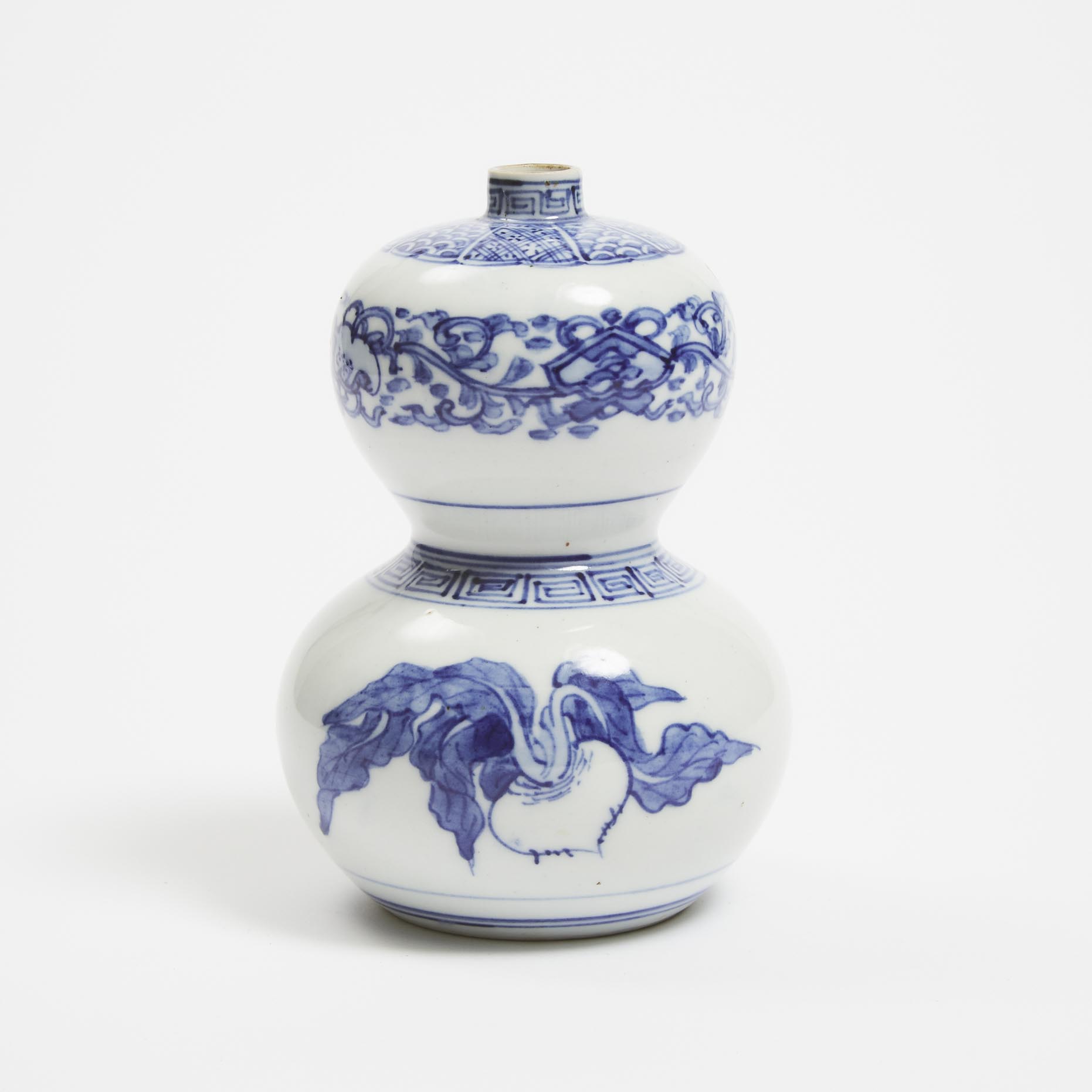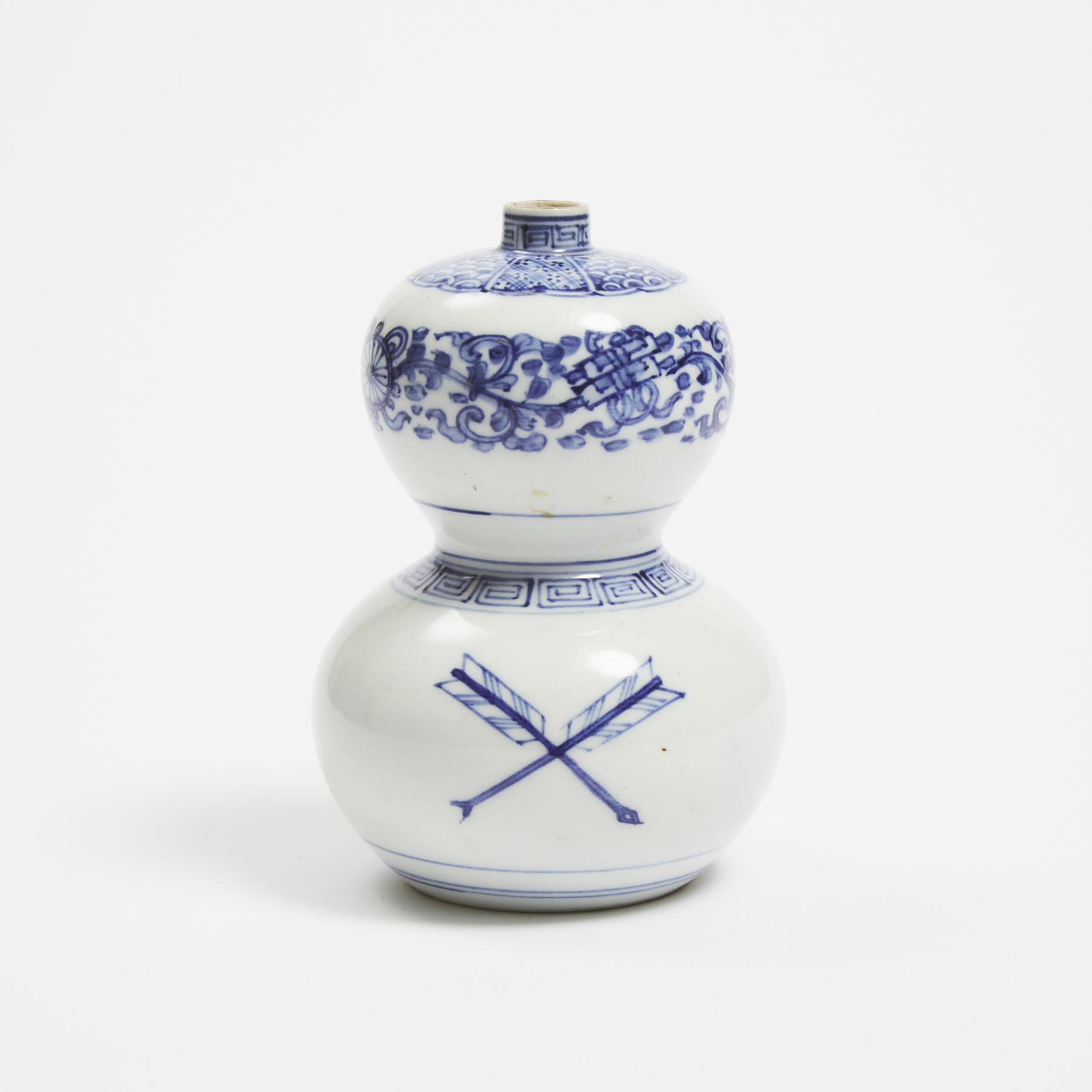Lot 331
A Koto-Yaki Blue and White Double-Gourd 'Kabura-ya' Vase, Edo/Meiji Period, 19th Century

Lot 331 Details
A Koto-Yaki Blue and White Double-Gourd 'Kabura-ya' Vase, Edo/Meiji Period, 19th Century
Decorated in underglaze cobalt with alternating brocade panels and keyfrets at the neck, the upper bulb with four Buddhist emblems amongst leafy scrolls and the lower bulb with 'Kabura' arrows and turnips, 'Koto' 湖東 mark within oval cartouche on the underside; together with its original box
height 5.7 in — 14.5 cm
Estimate $200-$300
Additional Images

Note:
Koto ware was first developed in the late Edo period by the Ii family, the lords of Omi province (modern-day Hikone city, Shiga Prefucture).
The first kiln is thought to be started by Ii Naosuke, 13th Lord of Omi, when he gathered potters and painters from all over Japan to develop Koto ware. The first kiln started operation around 1829, and the last kilns ceased production in 1895.
The motif of turnips with arrows refers to the specific type of arrow called 'Kabura-ya', literally translated to 'turnip-headed arrow'. Like a wind instrument, this arrow whistled when shot due to its perforated, bulbous-shaped tip. It was used to alert the opponent or signal the start of a formal medieval battle. In Shinto religion, the sound of a 'Kabura' arrow is thought to ward off evil.
For another Koto ware example, see Bonhams New York, September 16, 2009





